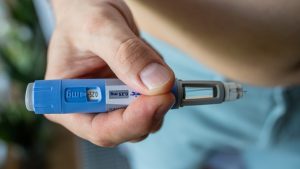Articles / Pharmacy Guild gets what it wants…yet again


writer
Adjunct Associate Professor, Menzies Centre for Health Policy, University of Sydney
The Albanese government and the Pharmacy Guild of Australia have this week signed the eighth Community Pharmacy Agreement, which will come into effect on July 1.
The government has touted the agreement as enabling people to continue to receive cheaper medicines and world-class health care from their local pharmacies.
There’s no question pharmacists are integral to delivering health care in the community. They are responsible for ensuring prescriptions are filled accurately and in a timely fashion, and for providing advice and guidance to their customers about the medicines they dispense.
But, once again, this agreement shows the power the Pharmacy Guild of Australia, which represents the owners of community pharmacies, wields in shaping policy and funding.
The Community Pharmacy Agreement was started in 1990 and is renegotiated every five years.
This eighth agreement delivers A$26.5 billion in funding over five years, a $3 billion boost over the previous agreement. This represents about one-quarter of the total cost of the Pharmaceutical Benefits Scheme (PBS).
Of the $26.5 billion, $22.5 billion is for the cost of dispensing prescriptions. The funding also includes $2.1 billion for a new Additional Community Supply Support Payment to address the pharmacy guild’s concern about the financial impact of 60-day prescribing.
There’s $1.2 billion to cover pharmacy services, including continuation and expansion of medication management and medical review programs.
This $1.2 billion also includes an increased Regional Pharmacy Maintenance Allowance, which aims to support access to PBS medicines and pharmacy services for people in rural areas. The program provides financial support to eligible pharmacy owners in regional, rural and remote settings. The new agreement increases funding for this allowance by $52 million. Some of the most remote pharmacies may be eligible to receive up to $95,000 per year in support.
Further, $484.4 million will cover the costs of a one-year freeze on the maximum PBS co-payment for everyone with a Medicare card and up to a five-year freeze for pensioners and other Commonwealth concession cardholders. These changes were announced in the recent federal budget.
These changes will require legislation for their enactment. When introduced, the bill should have further details of how this $484.4 million is distributed in costs to government and funding to pharmacies.
The Pharmacy Guild of Australia is recognised as a powerful lobbying organisation. It’s interesting that pharmacy business owners and not pharmacy professional groups are the key drivers of government policy. Indeed, one analysis has characterised the Community Pharmacy Agreements as industry policy benefiting pharmacy owners rather than health policy.
This latest agreement exemplifies the fact that the pharmacy guild usually gets what it wants. Last year the Albanese government announced the 60-day dispensing policy, which doubled the amount of medicine dispensed with some scripts from a 30-day to a 60-day supply. The pharmacy guild launched an emotional attack, claiming huge pharmacy losses would result.
The government subsequently offered an early renegotiation of the Community Pharmacy Agreement (not due until 2025). The guild eagerly accepted this offer.
In March, Health Minister Mark Butler announced an agreement had been reached between the government and the pharmacy guild. The next Community Pharmacy Agreement would contain an extra $3 billion in pharmacy funding.
This extra funding includes the $2.1 billion, via the new Additional Community Supply Support Payment, to offset presumed pharmacy losses. Pharmacists will receive an extra $4.80, on top of the usual $8.37 dispensing fee and a $4.62 handling fee, when they give out a 60-day script.
Plus there’s the guarantee, in place since 2020, that remuneration per script will increase year on year over the life of the Community Pharmacy Agreement.
A number of reports have been critical of the lack of data about the effectiveness of the community pharmacy programs supported by the Community Pharmacy Agreements.
A post-implementation review of the seventh agreement found that, in common with previous agreements, there was a lack of effective evaluation and assessment mechanisms for programs. The review said the scarcity and quality of available data for robust and meaningful analysis of health outcomes was a continuing concern.
The government’s Medical Services Advisory Committee made similar findings about the sixth agreement.
Yet several of these medication management and review programs (for example, Dose Administration Aids, MedsCheck and Diabetes MedsCheck) continue to be funded with a 30% increase in this Community Pharmacy Agreement.
Discussion about other programs (for example, Home Medicines Review and Residential Medication Management Review) is continuing as part of the focus on “new and improved pharmacy programs”, allocated $103.3 million in the agreement.
The pharmacy guild says it has secured a 22% increase in funding under this agreement compared to the last one. No other part of the health-care system has seen that level of increase in funding support.
Such exceptionalism should demand greater transparency, accountability and scrutiny of the influence of the Pharmacy Guild of Australia on government policies.![]()
Lesley Russell, Adjunct Associate Professor, Menzies Centre for Health Policy and Economics, University of Sydney
This article is republished from The Conversation under a Creative Commons license. Read the original article.
![]()

Menopausal Hormone Therapy - What Dose of Estrogen is Best?

Cardiovascular Benefits of GLP1s – New Evidence

Oral Contraceptive Pill in Teens

RSV and the Heart

writer
Adjunct Associate Professor, Menzies Centre for Health Policy, University of Sydney



Modified but kept in place
Eliminated entirely without replacement
Maintained as is
Completely replaced with an alternative system
Listen to expert interviews.
Click to open in a new tab
Browse the latest articles from Healthed.
Once you confirm you’ve read this article you can complete a Patient Case Review to earn 0.5 hours CPD in the Reviewing Performance (RP) category.
Select ‘Confirm & learn‘ when you have read this article in its entirety and you will be taken to begin your Patient Case Review.
Menopause and MHT
Multiple sclerosis vs antibody disease
Using SGLT2 to reduce cardiovascular death in T2D
Peripheral arterial disease
